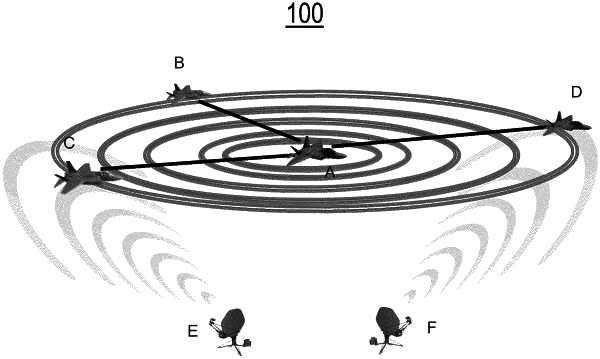| CPC H04W 72/541 (2023.01) [H04L 5/14 (2013.01); H04W 24/10 (2013.01)] | 20 Claims |

|
1. A transmitter in a frequency domain duplexing (FDD) network system configured to:
receive spectral information from one or more neighbor receiver nodes, the spectral information including a power at each of a plurality of transmit frequencies within a current band of operation;
for each of the one or more neighbor receiver nodes, compute an energy per bit (Eb) to noise power spectral density (N0) ratio (SNR) at each of the plurality of transmit frequencies within the current band of operation, forming an SNR curve;
for each of the plurality of transmit frequencies, identify minimum SNR values among SNR values on the SNR curves of the one or more neighbor receiver nodes, the minimum SNR values forming a composite minimum curve;
based on the composite minimum curve, determine whether an SNR of a current transmit frequency is above (1) a first threshold associated with a predetermined operating SNR, or (2) a second threshold associated with a maximum of the composite minimum curve; and
based on determining whether the SNR of the current transmit frequency is above the first threshold or the second threshold, determine whether a new transmit frequency is selected to replace the current transmit frequency.
|